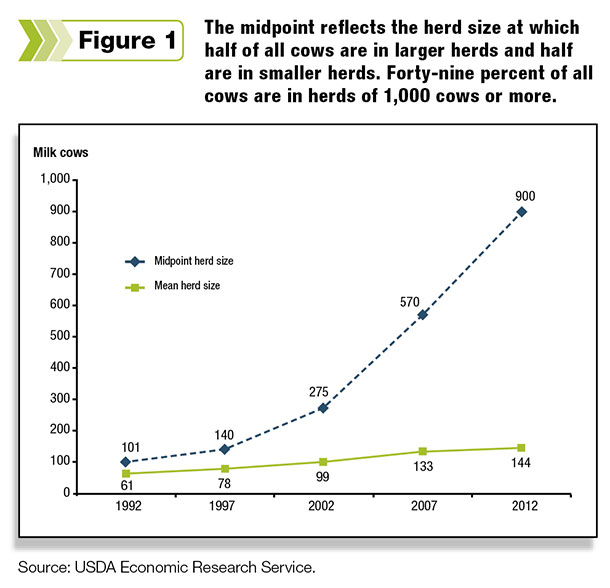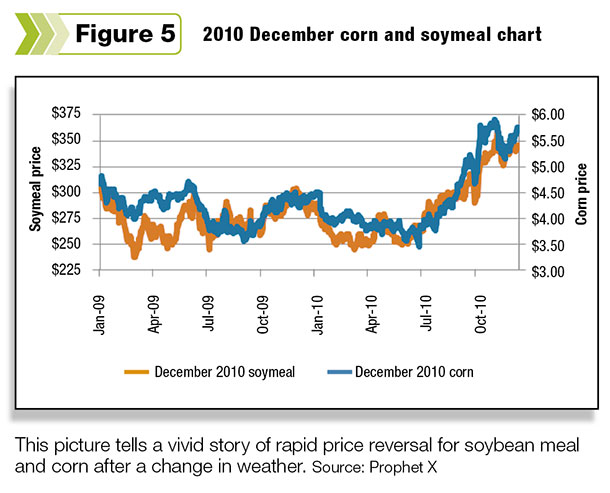As a dairy farmer, you regularly manage through issues that arise with herd health, labor, equipment, facilities and crops. No one doubts your ability to remain resilient in the face of constant challenge.
Have you ever considered that what you practice out of habit in these areas of your operation can also be applied with great success to your marketing? More important, applying those habits has become an economic reality for many dairies.
Habits of resilient marketers
One can define resiliency in various ways. I’m thinking of three – the first being acceptance of reality. When you accept reality, you’ve discarded your rose-colored glasses.
Resilient individuals also search for meaning in their work. They have an innate force that continually drives them toward a purpose. Lastly, resilient individuals make the most of what they have. By taking action rather than waiting for change to come to them, they take control of their situations.
Resiliency: An economic reality
One major reality that must be accepted is the transformation in herd size and its effect on profitability. We have nearly 60 percent fewer farms than we did two decades ago, resulting in a 136 percent increase in cows per farm from 1992 to 2012.
Yet about half of all cows now are on farms with herds of 1,000 or more. Most milk production has shifted to larger herds (Figure 1).
 Economic realities drive this shift to larger dairies. For example, there is a material difference in the average cost of production per hundredweight of milk produced by larger herds versus smaller herds.
Economic realities drive this shift to larger dairies. For example, there is a material difference in the average cost of production per hundredweight of milk produced by larger herds versus smaller herds.
While data show financial performance equates favorably to larger herd size (Figure 2), it doesn’t mean small farms aren’t profitable. It’s simply pointing out that, generally, lower costs and higher profits are found on large dairies. Small and mid-size dairies have a more difficult time covering their costs.
 Large farms tend to have an economic advantage because they can create economies of scale in terms of housing, milking facilities and machinery. They may possess more technology that enables lower labor costs.
Large farms tend to have an economic advantage because they can create economies of scale in terms of housing, milking facilities and machinery. They may possess more technology that enables lower labor costs.
So if you accept this economic reality, then what? Some small to mid-size dairy owners who are doing just fine may shrug off these statistics. Others have already decided to make changes. Artisan cheese production and genetics might be their alternative means to greater profitability. I know of one dairy that put kids through college selling pumpkins and Christmas trees on the side.
There’s one option for many dairies that can make a big difference to the bottom line: active management of milk and feed price risks. Over time, price management, done well, can be an equalizer that provides a competitive advantage.
Search for meaning
After realism, there is purpose. When you love what you do, you don’t have to look hard for purpose. You might find meaning in things like caring for animals, feeding the world, building a thriving business or never seeing the inside of an office cubicle.
Then there are times you have to search for meaning. Have you ever asked yourself why you just can’t be paid a reasonable price for your production? Or asked: What’s the real purpose of marketing?
If so, it’s time to search for meaning. Decide that marketing is going to help you do something that matters. Perhaps that means creating a lasting legacy or something similarly grand. Whatever your purpose, keep it in mind as you think about marketing. Having purpose keeps you going, no matter the endeavor.
If you find that last point easier said than done, try a bit of reverse engineering (Figure 3). Think about what might keep you from finding meaning in marketing. There are five common reasons farmers struggle to embrace marketing:
1. Knowledge. There’s a lack of understanding.
2. Risk tolerance. The risks taken don’t align with comfort zones.
3. Time. There isn’t enough time to do marketing well.
4. Discipline. They don’t plan ahead or execute when the time comes.
5. Past experiences. They assume bad past experiences are the norm.
If any of those constraints apply to you, you’re going to need to overcome them in order to be a resilient marketer.

Take control of situations
Along with facing down realities and having purpose, resilient individuals take control. This is where the rubber really meets the road. Commodity markets move fast. If you don’t gain some control over the price you receive for production and pay for inputs, the market gets to call all the shots.
We saw that to some extent over the past year with milk prices (Figure 4). The October 2014 front month was priced at about $24. Deferred months were selling at a much lower price than the front month. While this made active management tricky, it also underscored the speed at which price can change.
 You don’t have to go back far for a good example of rapid, unexpected change in feed. In 2010, we had very good crop conditions right after planting season. Price sentiment was bearish. Buyers weren’t thinking about locking in low feed prices because the outlook promised even greater bargains. Then wetter days and hotter temperatures in June and July weakened yield projections.
You don’t have to go back far for a good example of rapid, unexpected change in feed. In 2010, we had very good crop conditions right after planting season. Price sentiment was bearish. Buyers weren’t thinking about locking in low feed prices because the outlook promised even greater bargains. Then wetter days and hotter temperatures in June and July weakened yield projections.
Remember those resulting price swings? The protein market jumped 46 percent that year, from a low of $248.50 in June to a high of $364.90 in November on the December 2010 soybean meal contract.
Corn yield projections dropped significantly throughout the season. The corn price low of $3.4325 in June became a high of $6.05 in November on the December 2010 corn contract, a 76 percent rally (Figure 5).
 This summer, feed price sentiment was heavily bearish, and few people, if anyone, were willing to price feed. The rain kept coming, and we saw price change direction. While not a steep rise, the largely unexpected change reinforced the importance of your taking control over pricing.
This summer, feed price sentiment was heavily bearish, and few people, if anyone, were willing to price feed. The rain kept coming, and we saw price change direction. While not a steep rise, the largely unexpected change reinforced the importance of your taking control over pricing.
Doing so requires planning in advance. It means looking at all the possible price scenarios and creating a strategy for each one, even for the most unlikely.
Did you know that this year, the feed market has been trending in a pattern we saw in 2002, 2010 and 2012? In those three years, the market low arrived in the May-to-June time frame, not at harvest. And in those years, the price rallied an average of 35 percent.
When you’re taking control, you’re preparing for such a scenario.
Practice what you possess
Resiliency is to farm marketing what blocking and tackling are to football: a basic fundamental. It can’t be forgotten.
You may possess business advantages such as economies of scale. You may own technology – whether in the form of real-time quotes delivered to your phone or sophisticated market analysis software – that can help you become faster and smarter. Never let these things obscure your innate resiliency.
Try putting into practice the habits you already possess. It’s a small step from resiliency in production, herd health and facilities to resiliency in marketing. PD
DISCLAIMER: Futures and options trading involve significant risk of loss and may not be suitable for everyone. Therefore, carefully consider whether such trading is suitable for you in light of your financial condition.
References omitted due to space but are available upon request. Click here to email an editor.

-
Patrick Patton
- Director of Client Services
- Stewart-Peterson Inc.
- Email Patrick Patton








